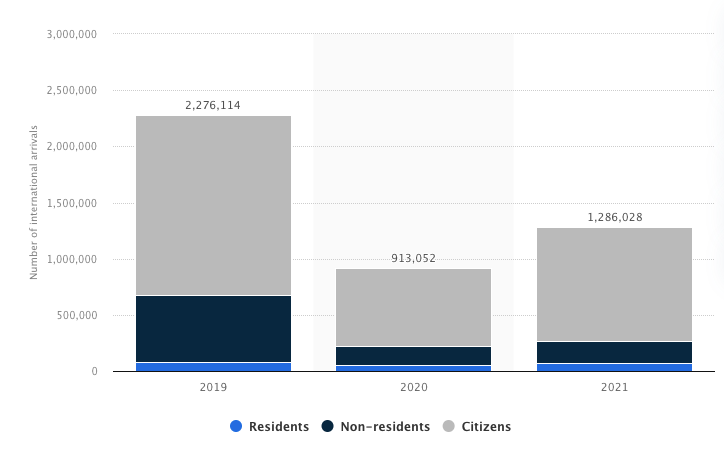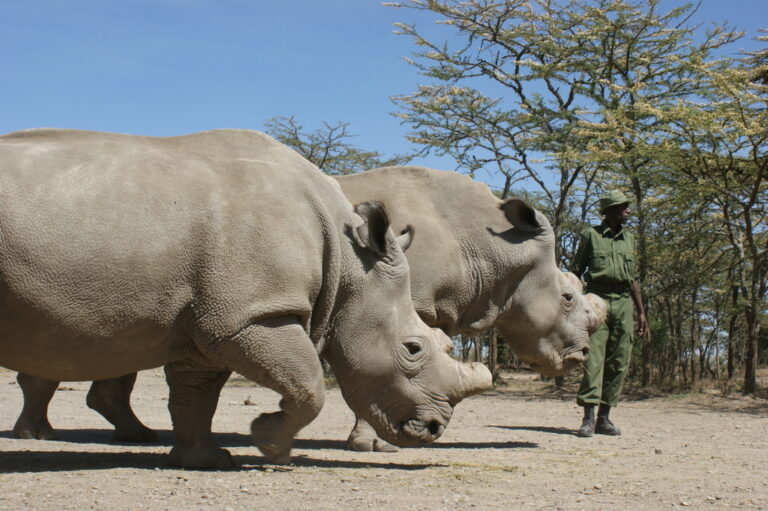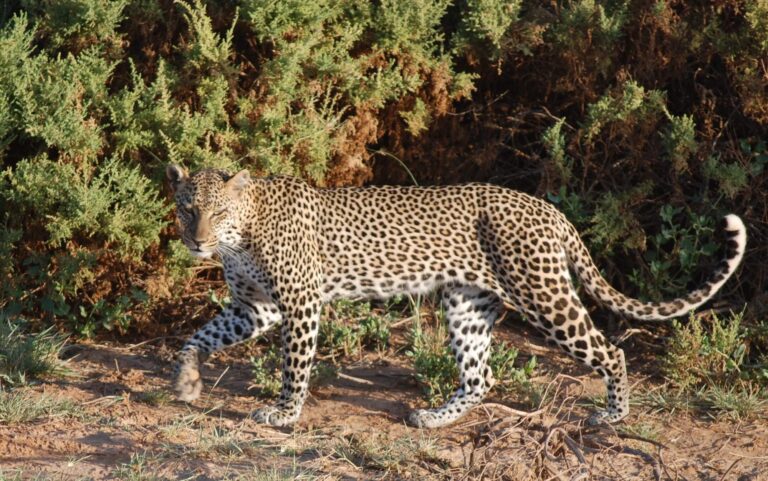Kenya has plenty of mammals, birds, fish, reptiles, amphibians, and insects, similar to many other African nations. Kenya is home to many most well-known wildlife species like the big five of Africa (lions, leopards, elephants, buffalos, and rhinos).
Marine animals from Kenya make up another portion of the country’s wildlife because the country is in east Africa and borders the Indian Ocean on one side. Kenya shares borders with Tanzania on the southwest, Uganda on the west, Ethiopia and South Sudan on the north, and Somalia on the east. To enjoy Kenya’s amazing and unique wildlife while on safari is just one of the many reasons to travel there.
Nearly 100 mammal species and more than 400 bird species can be seen in locations like the Maasai Mara, Lake Nakuru, Amboseli, Tsavo, Samburu, and more. Just 60 kms from Mombasa, one of the best places in Africa to see elephants is the Shimba Hills National Park. Tsavo East and West are great places to go on the big 5 safari and see about 500 species of birds.

Image credit – Statista.
Kenya is one of the best countries to go on a safari to see wildlife roaming in its natural habitat. It has amazing landscapes, pristine coastline beaches, and rich cultures. Wildlife animals in Kenya can be seen while on unique safaris organized by Msambweni Beach House. Your time and money are well spent if you travel to Kenya because you’ll get to see the wilderness for what it really is and leave with a tonne of wonderful memories. About 1.3 million people visited wildlife tourist facilities in Kenya in 2021. Continue reading for more facts on Kenya’s wildlife. And if are you searching for Mombasa south coast beach hotels, click below.
10 Wild Animals from Kenya You Shouldn’t Miss

Image credit – National Wildlife Census 2021 Report.
A childhood dream that persists long after we outgrow our toy animal friends is traveling to Africa to see the wildlife. We’ve got ten strong reasons for you to finally fulfil that dream, and guess what? All of them are safari animals from Kenya! The big five wild animals are our starting point, and we then add five more species just for good measure. Even better, we provide some facts about each animal and suggest the best places to see it while on a tour.
[Also, Read: 15 Types of Travelers & Best Resort in the South of Kenya]
1. Elephant

Image credit – Sandra Schanzer.
The largest land animals in the world are African elephants, which can weigh up to 6.5 tons. There is no other animal with a similar physique, with their unique long noses, or trunks, huge floppy ears, and wide legs.
Did you know? Elephants have around 150,000 muscle units in their trunk. Their trunk is the most sensitive organ found in any mammal. It is one of the worst human wildlife conflicts in Kenya as elephants are being poached for Ivory trade. Is wildlife conservation important? Yes, the wildlife conservation is crucial to maintain the environment for future generations while repairing some of the harm caused by humans.

Image credit – Ventes ventures.
The African Elephants are smart, sociable, and familial animals from Kenya. Among other parks and reserves like Samburu and Amboseli in Kenya, the Tsavo ecosystem accounts for more than 37% of the national elephant range. You won’t have to go far from Mombasa sub counties. One of Kenya’s more recent reserves is the Mwaluganje Elephant Sanctuary. Msambweni Beach House can take you on a Shimba Hills tour to see elephants as well. And if you want to stay at the best hotel in Mombasa Kenya or around? Call us at +254 723 697 346 or email us at info@mbh.co.ke.
2. Rhino

Image credit – savetherhino.org
How many rhinos are left in Kenya? Kenya has the third largest population of rhinos in Africa after South Africa and Namibia, having a total of 1605 rhinos (853 black rhinos and 752 white rhinos). Did you know? The white rhino has almost the same color as the black rhino. Smaller than the white rhinos more often seen at Lake Nakuru, black rhinos are abundant in Tsavo and Lewa Conservancy as well as other parks.

Image credit – BBC.
In addition, Black Rhinos are more hostile than White Rhinos, and they use their horns for fighting, mating, and self-defense against predators. They prefer habitats with dense bushes and use their hooked lip to browse shrubs. The rhinos are also among the most endangered animals from Kenya.
3. Lion
The East African lion, Panthera leo melanochaita, is the national animal of Kenya. With its striking roar and lush mane, it is a majestic, regal sight. One of the “Big Five” Kenya wild animals that was once widely hunted but is now illegally poached.
Did you know? The largest of the nation’s big cats, lions are the only ones to live in social units known as ‘Prides’ of between 3 and 30. How many lions are in Kenya? Nearly 2,589 are present in Kenya’s National Reserves and Parks. Do you want to know about the best places in Kenya to see lions? Among the best places in East Africa to see these majestic animals from Kenya on a safari are Tsavo East and West.

Image credit – kilimacamp.
Male lions can control vast territories that can be between 30 and 400 square km in size. When it comes to hunting down the prey, the lionesses (females) take the lead. The Males will try to help with a hunt. Maasai Mara National Reserve in Kenya is another beautiful place to see the Maasai lions along with a hot air balloon safari organized by Msambweni Beach House.
4. Buffalo

Image credit – PACO COMO/Shutterstock
Did you know? The African buffalos kneel down to rub their necks and heads on the ground in a display of aggression to establish dominance. One of the “Big Five,” the African buffalo is known as one of the nation’s most dangerous creatures. The buffalos in the open savanna ecosystems of Kenya are 41,659.
African Buffalo has four subspecies, with Cape Buffalo being the most widespread. They can be identified by their size, color, and even horn shape. There are forest buffalo and savanna buffalo from West and Central Africa as well. The large horns that the male and female Buffalo have are used as weapons and for protection.
Buffalos from Africa have keen eyesight, hearing, and a strong sense of smell that aids them in spotting lions, which are their main foes. Except for Nairobi, all of the major reserves like Shimba Hills have massive numbers of these animals from Kenya.
5. Leopard

Image credit – holaasafarikenya.
The leopard (Panthera Pardus) is regarded as a member of the Big Cat family. It stands out for its camouflaged fur, proactive hunting style, diverse diet, strength, and capacity to adapt to a wide range of habitats. These animals from Kenya are stunning hunters, well known for their incredible strength and agility to climb trees while dragging a kill that is heavier than their body weight.
Samburu National Reserve, Lake Nakuru, and the Maasai Mara are a few locations where you can search for these lone hunters. Their population increases from July to September as more potential food is available due to the great wildebeest migration passing through the region.
Did you know? They can run at 58 km per hour. Leopards are threatened by human poaching and habitat loss. They are listed as vulnerable on the IUCN Red List despite being present in healthy numbers in some of Kenya’s major parks.
6. Wildebeest
Just like the sable antelope, a member of the antelope family is the wildebeest. Its body is heavily built in the front, but slender and spindly in the back, giving it a more bovine-like appearance. These animals from Kenya have a grey coat, a black mane, and either a black or white beard. Did you know? They move around in big herds of 15 to 20. Their preferred habitats are open grassy plains and open woodlands.
What is the Great Wildebeest Migration? Every year from June to October, thousands of people visit Maasai Mara to see the migration of Wildebeest. More than 1.5 million animals (wildebeest, zebra, and gazelle) migrate in a clockwise direction across the ecosystems of the Serengeti in Tanzania and the Maasai Mara in Kenya.
7. Hippo

Image credit – Wikimedia commons.
Large, spherical, and water-loving, hippos are native to Africa. Did you know? The average adult male weighs close to 1500 kilos, making them the third largest land mammal. These animals from Kenya live in swamps, rivers, and regions close to lakes, staying immersed in water for the majority of the day to stay cool. The parks with the largest density of them include Lake Nakuru National Park, Amboseli, Nairobi, Tsavo, and the Maasai Mara National Game Reserve, as well as Lake Baringo.
8. Zebra

Image credit – grevyszebratrust.org
The single-hoofed zebra is a native of Africa. These animals from Kenya live in large herds or small harems and are social animals. The plains zebra, the mountain zebra, and the Grévy’s zebra are the three different species of zebras.
The plains zebra is found in the Maasai Mara, whereas the Grevy’s zebra, which has uniquely thinner stripes, can be found in the Samburu Reserve in northern Kenya. Did you know? Grevy’s zebra can live up to 5 days without water. Both the mountain zebra and the Grévy’s zebra are endangered. Tsavo conservancy is the best place near Mombasa to see Grevy’s zebra.
9. Giraffe

Image credit – masaimara.travel.
The tallest living terrestrial animal is the giraffe (Giraffa). Even when running at their fastest speed of 50 to 60 km per hour, they are known for their graceful movements. Long necks and legs, horn-like ossicones, and unique coat patterns are their most defining features of these animals from Kenya.

Image credit – eleraicamp.
Did you know? A giraffe’s spots are like human fingerprints. There are two main subspecies of giraffes found in Kenya: The Maasai Giraffe in southern Kenya, which includes the Maasai Mara and Amboseli (where you can also take Maasai community visits organized by Msambweni Beach House), and the Reticulated or Somali Giraffe in northern Kenya. Nearly 34,000 giraffes can be found in the Kenyan wilderness.
10. Cheetah

Image credit – Ventes ventures.
As the fastest land mammal in the world, the cheetah has a light build, long, thin legs, and a long tail. Did you know? They can attain a full speed of 130 km per hour and don’t scavenge. Hunting is their main activity, with peaks at dawn and dusk. They are most active during the day.

Image credit – Emboo.camp.
These animals from Kenya weigh between 40 and 60 kg, stand about 80 cm tall at the shoulder, and are about 210 cm long (including the tail). All of Kenya’s major game reserves have cheetahs though in very small numbers. You can see some at Taita Hills sanctuary near Mombasa and some in Maasai Mara while enjoying the sundowners organized by Msambweni Beach House. Looking for diani beach restaurants instead of sundowners? Click below to experience something far better.
Forget the Animals from Kenya – Check Out the Marine Life & More
Marine Life

Kenya is well-known around the world for its abundant wildlife, as well as for its stunning coastline and marine life in its waters. One of the largest coral reefs on the continent can be found in the nation, where the vast, blue Indian Ocean meets 400 miles of coastline. While this reef is well-known for snorkeling, diving, and other water sports, the big game fishing off this coast is renowned worldwide besides the animals from Kenya. Popular marine species are below.
- Giant Trevally
- Mahi Mahi
- Kingfish
- Barracuda
- Tuna

Mombasa and Diani (south coast of Mombasa), North Kenya Banks, and Shimoni are a few famous locations for fishing. In Kenya’s maze of rivers and lakes, freshwater fishing is also an option. Fishing on the mainland can be a good way to see both the country’s stunning landscapes and the rainbow and brown trout that thrive in these waters. Besides fishing are you looking for more activities in Kenya? There are many other off-site activities like Mangrove and Sandbank excursion, kite surfing, scuba diving in Kenya etc. and safari from Diani beach offered by Msambweni Beach House.
If you are a marine watcher, then you can visit Mombasa Marine Park & Reserve. Formerly known as Msambweni Beach House, Msambweni Beach House in Msambweni offers Kisite Marine Park tours that lies in the south of Wasini Island. How far is wasini island from Diani? It is about 1 hour 20 minutes from Diani. Are you looking for activities in Diani instead? Click below.

Birds

Image credit – waterjournalistsafrica.
Kenya, a country with mountains, forests, rain forests, plateaus, and even coastal regions, is the iconic example of a multi-environment nation. Many bird species find refuge in Kenya, attracting birdwatchers from around the world. The best places to look for unique birds besides animals from Kenya are national parks and other protected wildlife areas. Here are some of the most popular type of birds in Kenya along with locations:
- Lake Bogoria National Reserve in Kenya’s Rift Valley for amazing sights of flamingos.
- Over 300 species of birds like the Verreaux’s Eagle-owl and more at Tsavo Conservancy.
- Taita hills for three unique forest birds – Taita Apalis, Taita White-eye, and Taita Thrush.
The best time of year to go bird-watching in Kenya is in July and early August when thousands of birds are migrating across the Mara River. If not, it is best to travel between November and December for breeding or during the rainy season from April to May when small birds of Kenya are more prominent. You will forget the safaris in Mombasa! Msambweni Beach House organizes the best safaris to Tsavo East or West or Conservancy with exciting offers for you and your family even if you are not staying at the opulent beach resort.
[Also, Read: 10 Epic Adventure Activities & Best Beach Hotel near Mombasa]
Go on a Wildlife Safari from Msambweni to See Animals from Kenya

The best safari in Kenya and Tanzania promise a once-in-a-lifetime experience, especially for those hoping to see the Big Five. Safaris give you the chance to see animals from Kenya in its natural habitat. From pristine white sand beaches to iconic wildlife in Amboseli, Tsavo, and Maasai Mara, exhilarating adventures start or end at Msambweni, Kenya. You can enjoy game drives, marine life, sundowners, bird watching, cultures, and much more while taking these authentic safaris.
Msambweni is a small fishing town in Kwale county. Are you looking for hotels in kwale county? Just 45 minutes from Diani and 30 minutes from Ukunda Kenya, Msambweni Beach House in Msambweni is a place where luxury feels like home. A place where you get access to unique locations for bespoke experiences. A place where treasured memories are made that stay with you forever. Especially because of the pleasant Msambweni weather all year round.
Do you want to stay at one of the best resorts in south coast Mombasa? Whether you want Mombasa beach hotel contacts or you are finding villas in Mombasa south coast, your search ends here. Contact us for your exclusive safari itinerary or to book luxurious Msambweni villas with a private pool in the embrace of natural beauty and picturesque surroundings.


